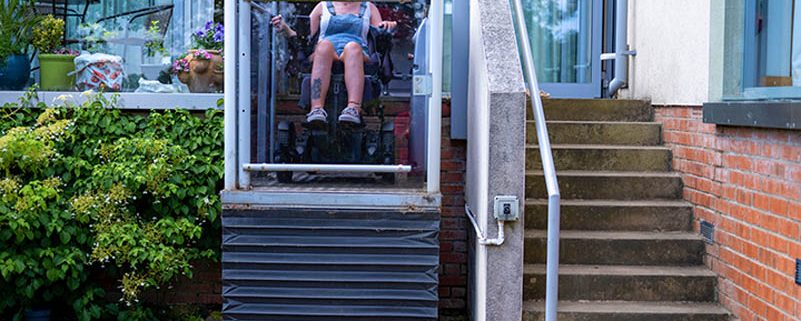Why Are Vertical Platform Lifts Crucial for Business Accessibility? Meeting ADA Standards with Ease
Accessibility isn’t a luxury—it’s a necessity. For businesses, creating an inclusive environment isn’t just about meeting legal obligations; it’s about fostering a space where everyone feels welcome. Vertical platform lifts (VPLs) are the unsung heroes of accessibility, offering a seamless, practical solution for businesses of all kinds.
1. Breaking Down Barriers, Literally
Stairs can be more than a challenge—they’re a wall that keeps some customers and employees out. Vertical platform lifts tear down these barriers.
Whether it’s navigating a single step or several feet of elevation, VPLs provide a safe, dignified way for wheelchair users, individuals with mobility challenges, or even parents with strollers to access your space.
Unlike ramps, which can require extensive space and modifications, VPLs fit where traditional solutions can’t. They’re compact, efficient, and designed to work in tight or multi-level spaces.
2. Effortless ADA Compliance
Navigating ADA regulations can feel like walking through a legal maze. But when it comes to accessibility for vertical changes in elevation, vertical platform lifts are a straightforward solution.
The ADA mandates that public spaces must be accessible to individuals with disabilities. VPLs check all the boxes:
- They provide wheelchair access.
- They’re simple to operate.
- They integrate seamlessly into existing layouts.
With a VPL, you’re not just complying with regulations—you’re making a statement that everyone belongs in your business.
3. Versatile Solutions for Any Space
One size rarely fits all. Fortunately, vertical platform lifts come in various designs to meet the unique needs of different businesses:
- Indoor or outdoor use: Perfect for entrances, courtyards, or interior spaces.
- Stationary or portable options: Adapt to changing needs or event-specific requirements.
- Low or high elevation lifts: Whether it’s a single step or a multi-level platform, there’s a VPL for the job.
This versatility ensures that every business, from boutique shops to large-scale offices, can find a solution that fits seamlessly into their environment.
4. Cost-Effective Accessibility
Think an elevator is the only way to ensure accessibility? Think again.
Vertical platform lifts are a fraction of the cost of traditional elevators, making them an affordable option for businesses. They require less structural modification, less energy, and less maintenance.
In short, you get maximum impact with minimal financial strain. It’s accessibility without compromise.
5. A Boost to Your Brand
Accessibility isn’t just about physical access—it’s about creating a welcoming experience for everyone. By installing a VPL, you’re showing your commitment to inclusion, which speaks volumes about your brand.
Customers notice when a business goes the extra mile. Employees feel valued when their needs are met. And in an era where reputation can make or break a business, these small steps can lead to big rewards.
Conclusion
Vertical platform lifts are more than mechanical solutions—they’re bridges to inclusivity. They empower individuals, simplify compliance, and enhance the overall experience for everyone who enters your space.
If your business has been debating how to improve accessibility, it’s time to elevate your approach. With a VPL, you’re not just meeting ADA standards—you’re exceeding expectations.
Because accessibility is good business. And with a vertical platform lift, it’s a business decision that’s as practical as it is impactful.



